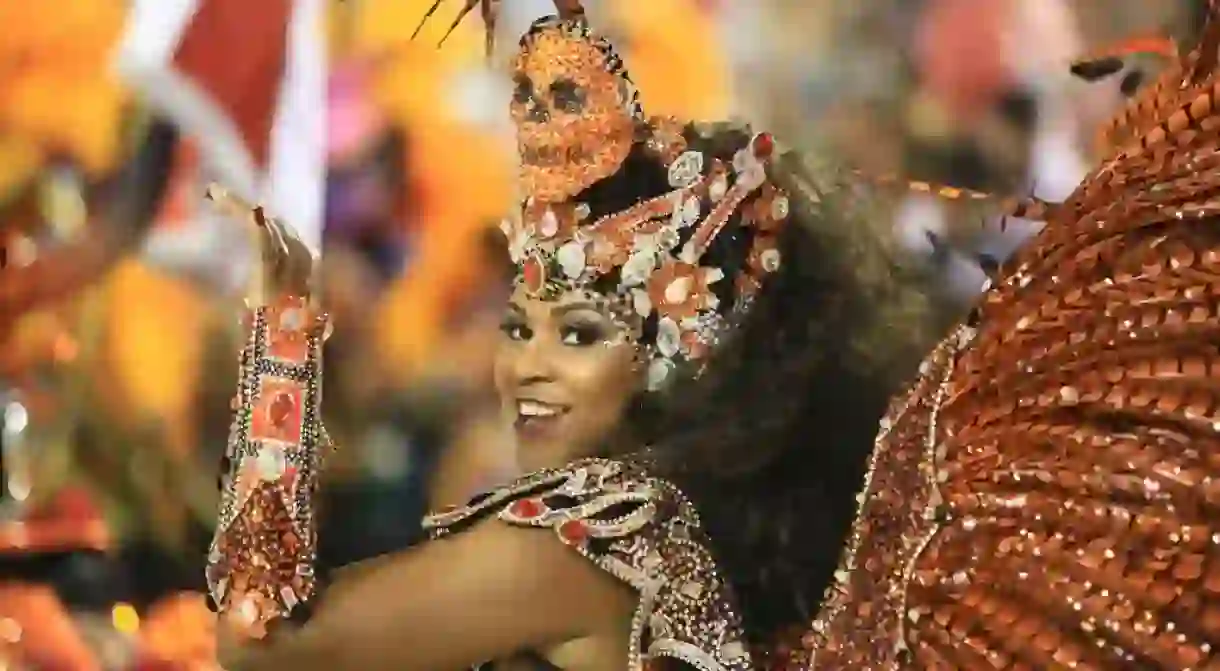How Did Brazil's Carnival Start?

Brazil’s Carnival has become the world’s largest festival, known for its over-the-top costumes, extravagant floats and week-long street parties renowned for their debauchery. It’s an event that brings the whole country to a grinding halt and reels in hundreds of thousands of tourists each year, but how did these iconic festivities begin? We bring you the lowdown on the history of Brazil’s Carnival.
Carnival in Brazil
Carnival begins every year on the Friday before Shrove Tuesday and ends on Ash Wednesday. The cities most globally-known for their Carnival celebrations are Rio de Janeiro, Olinda, Recife and Salvador, yet almost every city in the country has shows, events and performances. The popular saying ‘the year doesn’t start in Brazil until after Carnival’ is not far from the truth as the long, national Carnival holiday seems to encourage putting off all work-related plans for after the festivities are truly over.

The origins of Carnival
Surprisingly, Brazil’s festivities are associated with Catholicism and carnaval—a word derived from the Latin carne vale, meaning ‘goodbye flesh’—was originally a food festival where Catholic worshipers feasted in preparation for the following 40 days of Lent that started on Ash Wednesday. The Portuguese settlers brought this festival with them from Europe when they colonized Brazil in the early 1600s, though back then, it was celebrated as formal balls in the grandeur of the Portuguese elite’s homes. However, it didn’t take long for the Afro-Brazilians to start their own Carnival with African-inspired dances, music and the introduction of the fancy dress element by dressing up in a way that mocked the white Brazilian elite.

The beginning of the Samba Schools
For several years, Carnival was a segregated celebration. It wasn’t until the 20th century that the parties began to take to the streets and it became a festival that everyone enjoyed together. In Rio de Janeiro, samba—which was formerly considered the music genre of the poor and slaves—came to represent Carnival and in the early 1920s, the first samba schools were formed. This led to the samba schools starting to compete in the early 1930s through performances in the now world-famous parades in a bid to be crowned the winner of Carnival. At the same time, the Carnival Queen became an iconic figure of the schools. The Queen is the most talented and beautiful samba dancer chosen to represent each school, a position that is highly sought-after thanks to its prestige, status and lucrative modelling and TV deals.

Carnival today
These days, the parades take place in Rio’s Sambadrome, a wide avenue flanked on either side by large spectator stands that houses the tens of thousands of people who come to watch the jaw-dropping performances of the samba schools, which they prepare and practise throughout the entire year. The intricate costumes and impressive floats are made months in advance at the Cidade do Samba or Samba City, a large creative workshop in Rio’s downtown that is shared by all the samba schools. Although the religious element has become somewhat lost, the schools base their parade performances on certain themes that usually represent Brazilian history or social and environmental issues in Brazil, such as the Amazon Rainforest’s struggle or the history of Brazil’s Afro-Brazilian population.

What began as a Catholic event has turned into the world’s largest outdoor party and one that continues to grow each year, as Brazilians and foreigners alike take to Brazil’s streets to let go for one week and enjoy this traditional aspect of Brazilian culture.













